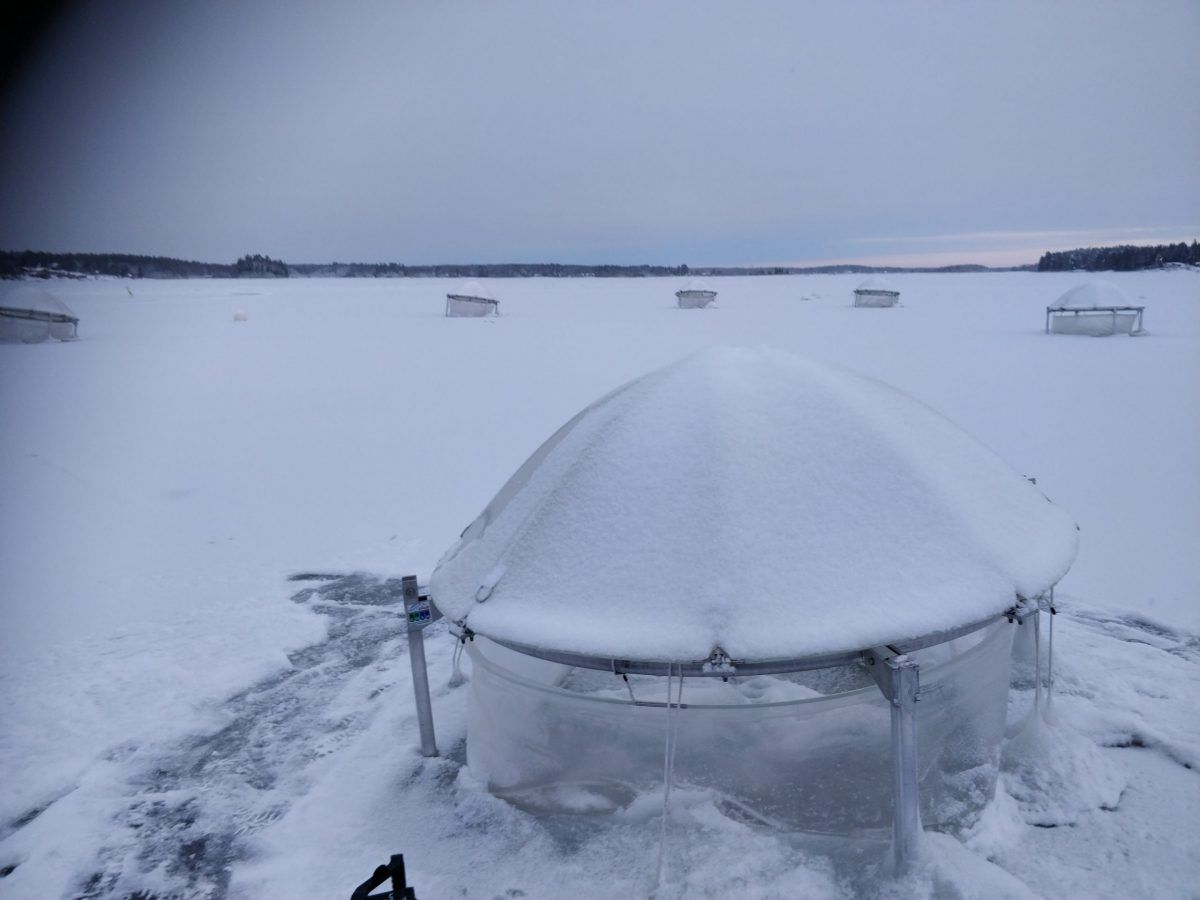Facilities
Transnational Access
Metadata & Data
Papers & Reports
Knowledge Base
Comparative double-mesocosm carbon experiment throughout the sub-arctic winter, Umeå, 18 Feb 2022
1st March 2022
After the last snow fall, several decimetres of snow now cover the 40 cm thick ice at the northern Baltic Sea mesocosm site. Nine of the new AQUACOSM mesocosm units, developed during the previous AQUACOSM-project and frozen into the ice, are compared with the indoor mesocosm system at the Umeå Marine Sciences Centre, Umeå University. Ice cover can also be formed in the indoor system. Since the end of November last year, both systems have been amended with carbon in the form of HuminFeed and a soil extract from the water shed, respectively. The impact of external carbon will be examined as well as how well the indoor mesocosm conditions compare with outdoor.
Hydrography, light, nutrients, chlorophyll-a, DOC and plankton respiration are the main variables measured. Phytoplankton has been measured at two samplings using a FlowCam. Additional variables will be measured by joining research groups. Phosphorous concentration is now at winter level with comparable concentration in outdoor and indoor systems. A major challenge, among many, has been to obtain a similar light climate in both systems. Sampling from the ice outdoors is easier than during open water, not least compared to during ice formation and breakup.
During the coming week the 3rd sampling will be conducted of the totally 7 planned. Two trainees, Julieta and Ivana, have arrived to contribute to sampling and measurements. During March when the productivity in the mesocosms is increasing two research groups focused on mixotrophy will arrive and analyse additional samples. At the end of the experiment in the beginning of May, valuable experience of the conditions in the mesocosms during a 6 month winter period and how these compare between outdoor and indoor systems will be available for compilation and evaluation. This includes information on how additions of carbon of different bioavailability have influenced the system, the latter can also be compared with other similar experiments across Europe during the AQUACOSM projects.

Credits:
The experiment is co-funded by the Umeå University.
Text: J. Wikner and H. Larsson
Contact: H. Larsson